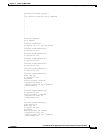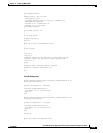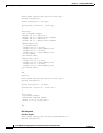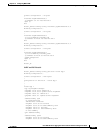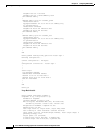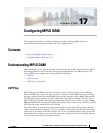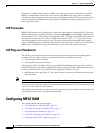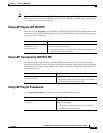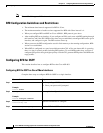
CHAPTER
17-1
Cisco ASR 901 Series Aggregation Services Router Software Configuration Guide
OL-23826-09
17
Configuring MPLS OAM
This chapter describes how to configure multiprotocol label switching (MPLS) operations,
administration and maintenance (OAM) in the Cisco ASR 901 router.
Contents
• Understanding MPLS OAM, page 17-1
• Configuring MPLS OAM, page 17-2
Understanding MPLS OAM
MPLS OAM helps service providers monitor label-switched paths (LSPs) and quickly isolate MPLS
forwarding problems to assist with fault detection and troubleshooting in an MPLS network. The
Cisco ASR 901 router supports the following MPLS OAM features:
• LSP Ping
• LSP Traceroute
• LSP Ping over Pseudowire
LSP Ping
MPLS LSP ping uses MPLS echo request and reply packets, similar to Internet Control Message
Protocol (ICMP) echo request and reply messages, to validate an LSP. ICMP echo request and reply
messages validate IP networks; MPLS OAM echo and reply messages validate MPLS LDP networks.
The LSP ping and trace functions use IPv4 UDP packets with UDP port number 3503. You can use
MPLS LSP ping to validate IPv4 LDP or Forwarding Equivalence Classes (FECs) by using the ping
mpls privileged EXEC command. The MPLS echo request packet is sent to a target router by using the
label stack associated with the FEC to be validated.
The source address of the LSP echo request is the IP address of the LDP router generating the LSP
request. The destination IP address is a 127.x.y.z/8 address, which prevents the IP packet from being
switched to its destination if the LSP is broken. The 127.0.0.x destination address range prevents the
OAM packets from exiting the egress provider-edge router, which keeps them from leaking from the
service-provider network to the customer network.



